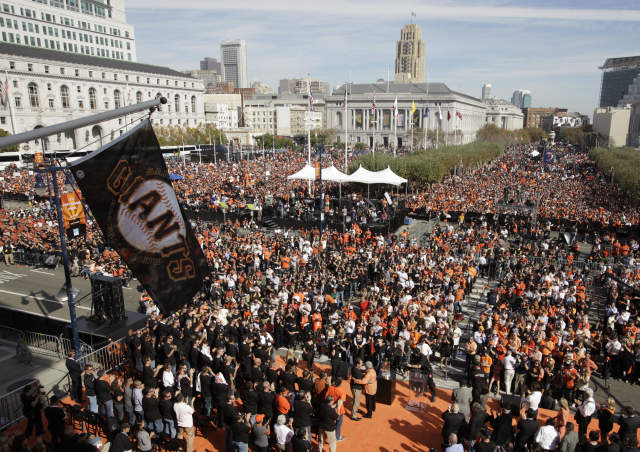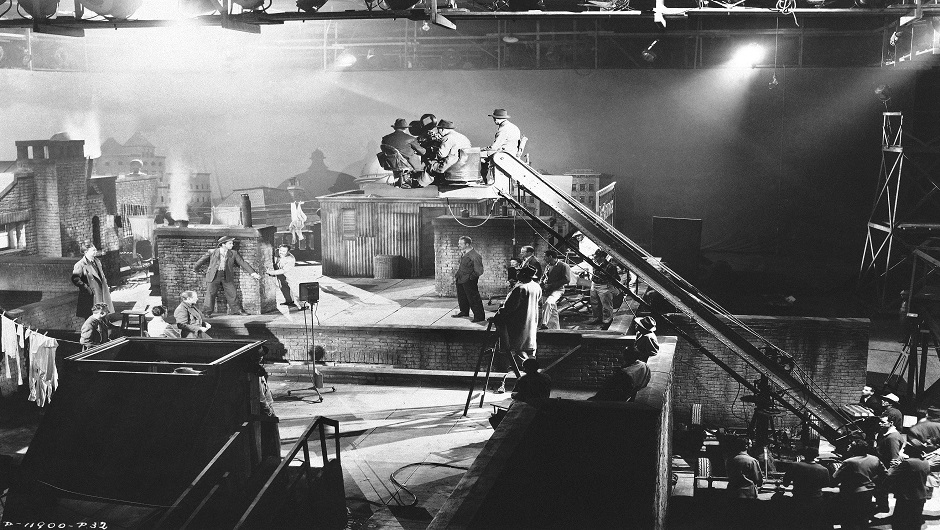Do these words make your entertainment-loving heart beat faster? Did you start writing your Oscar speech in third grade? Do you see yourself rubbing elbows with the beautiful people in Cannes?
Undaunted by your lack of nepotistic clout, you’ve moved to L.A. with everything you own in the back seat. You are ensconced in a $2,500 two-bedroom apartment with three other starry-eyed hopefuls. You’ve secured your waitress/bartender job and badgered some independent filmmaker on Craig’s List into letting you work for free to start your film industry resume.
It’s the night before your big first day and an assistant director (AD—they run the production) has just emailed you a map. You spend 20 minutes making sure that you know exactly how to find a hidden ranch 50 miles north of L.A. since your GPS won’t work in the middle of California’s golden hills and being late will get you fired. You’ve also received a “call sheet.” This mind-boggling collection of tiny print shows locations, crew names and positions, scene numbers, talent lists and arrival times—this is your first official “call time.” And no, 5:00 a.m. is not a typo. You go directly to bed and stare at the ceiling, too excited to sleep.
The alarm rings at 3:30 a.m. and you stagger to the shower. A half an hour later, you head north in the pitch black. At 4:30 a.m. you start to panic, sure you’ve taken the wrong turn as you wind down a fire road. But then you see it: a sign on a telephone pole. It’s big and yellow and points towards “crew parking.”
You pull in at 4:45 a.m. and see members of the art department driving away after decorating the set. Three of your fellow production assistants (PA) are climbing into a van. Awesome! Off you go, introducing yourself while bumping over potholes.
Stopping next to a fleet of huge trucks and a caterer, you start towards the mouth-watering smells of breakfast burritos only to be stopped by a Second Assistant Director—since surely you knew that 5:00 a.m. meant starting work, not getting breakfast.
In the next hour you label dressing rooms, hand out script pages, create sign-out sheets for the more than 30 walkie-talkies and get breakfast for makeup artists, actors and several people higher up the set hierarchy—which is pretty much everyone. Then the sun comes up and 65 members of the main crew arrive.
Your new boss tells you to take coffee and a walkie-talkie to the First Assistant Director on the set. What? This isn’t the set? No, this is base camp. Trying not to look clueless, you eventually see that there is a steady stream of worker bees carrying equipment down a trail. Being a clever lad, you follow and emerge in front of a ranch house. Crewmembers are setting up equipment at all points of the compass.
You’re pointed towards a small knot of folks deep in conversation. You hear phrases like “master,” and “two-shot” accompanied by animated gesturing. Ah, this is the Director, the First AD and the Director of Photography (cinematographer or DP). They are planning the first scene: which direction to shoot first, how many shots will be in this scene, special equipment needed (hand-held camera, dolly track, crane, etc.). The First AD finally notices you, takes the walkie-talkie and tells you that the coffee is cold and next time you should hand it to her and not just stand there. She sends you back to base camp for the Director’s latte. This errand process is repeated endlessly throughout the day until you have personally worn a trough in the path between the set and the trucks.
Soon, the Second AD pries the actors out of the makeup trailer and brings them in for rehearsal. The Director and actors decide where they will move during the scene, the Second Assistant Cameraman puts down color-coded pieces of tape to “mark” each position, the sound department decides whether to use a boom or lavaliere mics and the stand-ins take notes so that they can duplicate the action. Budget permitting, the actors, Writer and Director may have met in prep to work out dialogue changes and actor “motivation.” If not, the company waits while they go through this process and the First AD and producers worry about time. Decisions made and marks placed, you escort the actors back to makeup and hair.
The stand-ins step in as the DP takes over with his Gaffer (chief lighting technician) and Key Grip (in charge of anything that rigs a light) and lights the scene. Even outdoor scenes are carefully illuminated to establish the mood and flatter the actors. At high noon a parachute silk might be held over an entire set to soften the sunlight or a four-foot piece of board coated with what you would swear is aluminum foil will be pointed up at an actress to wash out telltale crows feet. Simultaneously, props assistants and set dressers arrange furniture and anything touched by an actor, sound folks work with camera operators to keep boom shadows off of walls, special effects techs ensure the barbeque pit is flaming and 15 departments make ready to immortalize this moment on film (or pixels as the case may be).
Meanwhile, back at base camp, you’ve been handed 100 “extras vouchers” and told to take roll. Ten percent of them will not have shown up and in at least one instance, Central Casting will have sent you three blond body-builders when the ADs asked for three Asian typists. Every extra must be individually approved for the 1940s by makeup, hair and wardrobe. You’re a production pied piper, leading a line of background actors through an artistic assembly line.
Just before the set is completely lit, the ADs place each extra and tell them what to do and when to do it: “Walk over and sit at the bar when Angelina Jolie says ‘Geronimo’.” I must warn you that at least 30 percent of the time, they forget this direction.
The actors return to the set after two hours of Hollywood makeup magic has transformed them into screen gods—and shooting begins. You are pointed to a corner of the set and told to keep real people from entering the shot and the crew quiet: both tasks far easier said than done.
Take a look, for example, at the set of The Lone Ranger.
That whole “Lights, Camera, Action” thing? Not really true. The First AD calls for quiet, announces that camera is “Rolling!” the Sound Mixer says “Speed“, the Camera Operator says “Set” and the First AD cues the extras “Background!” Only then does the Director whisper that sacred word: “Action.” You have now witnessed your very first take. Oh, it’s 8:45 a.m..
That shot (or “set-up”) was a wide angle of the whole scene and is called “the master.” It will be repeated six to eight times (“takes”) for TV with up to 50 takes on a feature film. The average television drama is shot in eight days while a big-budget movie can be 75-125 days. In the film industry, time truly is money.
Once a Director is happy with a master, all of the action is locked in. If the actor picked up a glass on a certain word, he has to repeat that precisely for every other shot. If the girl in the red dress walked behind Angelina as she lit her cigarette, she must be there every time. The Script Supervisor is in charge of this complex process of “matching” or “continuity.” Wardrobe makes sure that the sleeves are rolled correctly, props that the correct numbers of poker chips are in the same places and so on for every scene element.
After the master, a scene is “covered” in a series of different angles: close-ups, over-the-shoulder shots, etc. And for every one of them the set must be re-lit. Changing a camera lens takes a minimum of 15 minutes, having the camera face a different direction could take over an hour, lighting an auditorium can last days.
While the DP is painting with light, each department plans for subsequent shots and days of shooting. They create the call sheets, order those three typists from Central Casting, arrange for special equipment or double check a hundred other details. One dropped ball and you end up downtown at midnight without the right actor or the character’s car. And a company of 100 people is left standing around with nothing to do at $150,000 or more per day. This is frowned upon by the studio and heads will roll.
Before lunch alone you will make eight trips to the snack table for the producers, two trips to the caterer with lunch time changes, three trips to the wardrobe trailer for dry clothes, two to the makeup trailer to retrieve actors, 12 excursions to various trucks for items referred to by mysterious slang names (stingers, redheads, pancakes), 15 journeys to the xerox machine in the mobile office and one jog to an actor’s motor home for a forgotten script.
Before sunset, some crewmembers are sent outside to “pre-light” the night scene. Several of those cranes that city crews use to trim trees roll into place and some lucky electricians are sent up 60 feet into the air with a big movie light, a bottle of water and a small bucket. (No, I’m not kidding.) Lights appear in the windows and on the roofs of neighboring buildings. Achieving “night” requires hours of work and many, many lights. It all pays off when you catch your first glimpse of true movie magic: an entire block filled with slanting shadows, glowing streetlights, glittering pavement and man-made moonlight. You have truly arrived in the land of dreams.
After the last shot, you hear the famous words, “That’s a wrap.” The Director, actors and department heads go home. You, however, stay to help the grips and electricians take down all of those lights, the wardrobe department account for all that 1940s clothing and the ADs document the day’s work and prepare for tomorrow. Two hours later you and those same three PAs arrive at your cars. It is 11:00 pm. The good news is that tomorrow your call time isn’t until 6:00 a.m.—at the beach.
In the past 18 hours, your movie company has shot approximately three script pages, about two minutes of which will appear in the film (maybe). There were 22 set-ups, at least 200 takes and probably 16 hours spent preparing to shoot. The camera actually rolled for roughly 90 total minutes.
Your elbow rubbing with the stars consisted of “Here’s your protein shake, Angelina” and the third grip learned your name, but the Director still hasn’t. Nevertheless, you have made it to the first rung of the ladder. You’re off to an endlessly varied and demanding adventure in the take-no-prisoners world of the film industry.
A long day—but it sure beats actually working for a living!
Add The Sports Daily to your Google News Feed!








